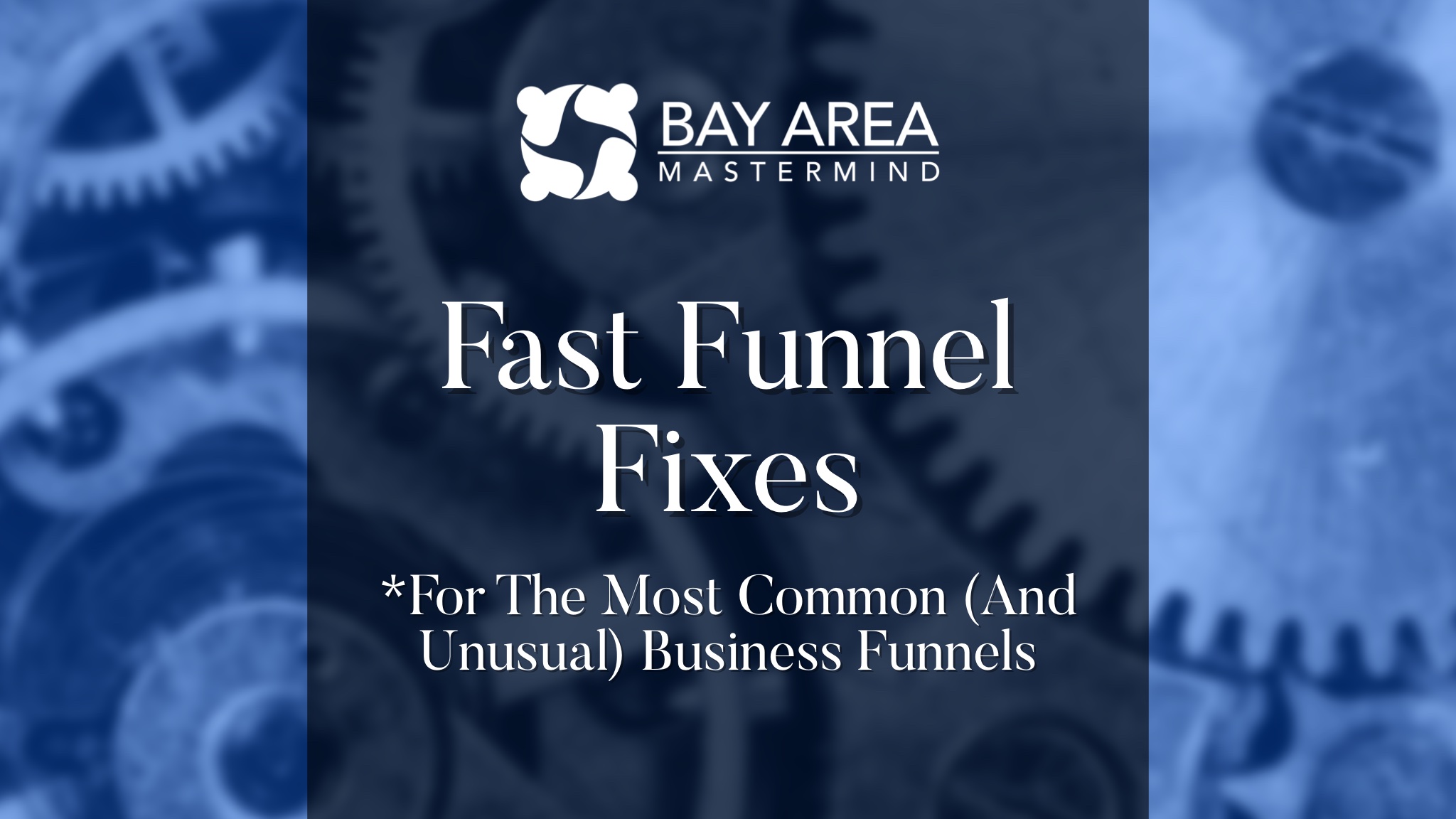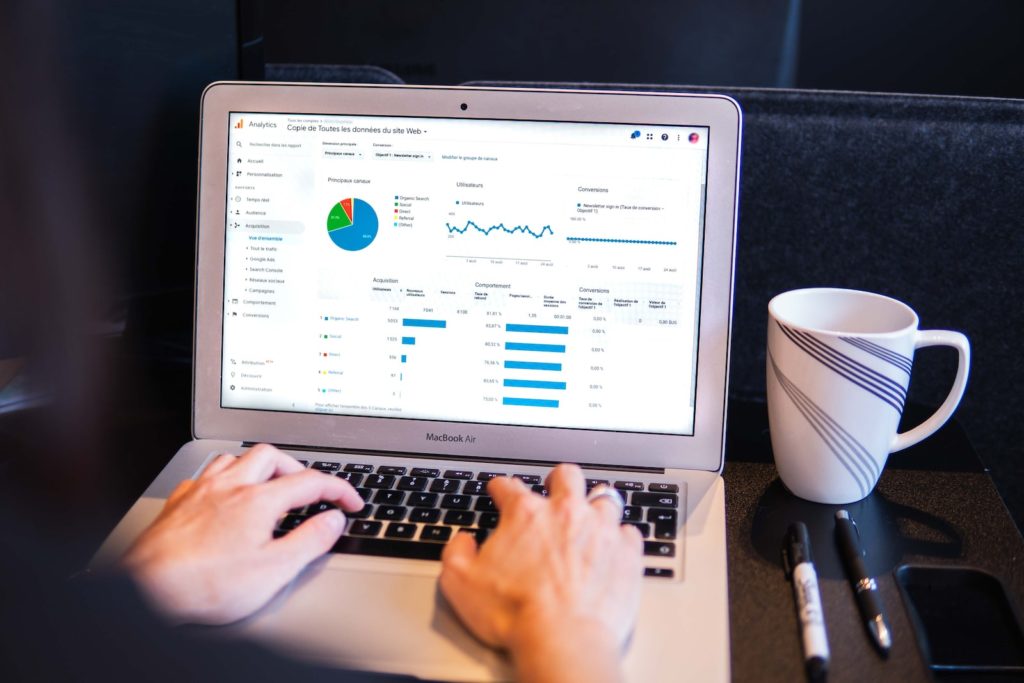
Funnels are everywhere in your business – not just in your sales pipeline – and knowing WHAT to optimize and where matters.
Beyond marketing funnels and sales funnels, where can you find funnels in your business?
How do you track each funnel stage and how effective your funnel is?
What are the most common places that a business owner will have automation tools fail them in a marketing funnel?
Once you see where your funnels are failing, how do you fix them?
Let’s jump in and find out answers to these funnel questions and more…
Most Common Funnels in Your Business
Funnels are leveraged everywhere in your business – not just for lead generation and prospects with your classic Top of the Funnel (ToFu) and Bottom of the Funnel (BoFu).
Funnels are used for new prospects, new customers, existing customers, hiring, career growth, and more.
Depending on where a person is in a particular stage of the funnel, you’ll have different offers, opportunities, and required actions. The prospect, customer, employee, etc then either moves forward in your funnel, stagnates, or drops out.
(Related, See Leading vs. Lagging Indicators: Driving Success With Leading Indicators )
Marketing Funnels (for Prospective Customers)
Most of the time when we talk about funnels, we’re talking about marketing funnels for lead generation and converting visitors from your target market into leads.
Often times your marketing funnel will be based around an opt-in form, a newsletter signup, a lead magnet, a call in offer, or anything to take someone and get them to raise their hand and engage.
When you hear about “Funnel Marketing” from books, speakers, and experts, this is the kind of funnel they’re typically talking about.
But… Funnels can do far more than just generate leads from your target audience!
Sales Funnel (for New Customers)
The second most common funnel you’ll encounter are sales funnels to convert prospects into paying customers.
Sales funnels take your leads (see above) and get them to actually buy from you. Your measurement of success is how many potential customers turn into new customers and how much new revenue this represents.
For example, a website visitor opts in to get your free video series (hooray, prospect!) and then you offer them the chance to buy a low price item from you, say a free product with just shipping and handling. When they buy, they’ve moved from a prospect to a customer.
Post-Purchase Funnels (for Existing Customers)
After someone purchases from you, they’re out of the “purchase stage” and are now a customer. There are customer funnels, too!
This could be in the form of an upsell funnel, a referral generation funnel, a purchase follow up to get reviews or testimonials, an onboarding call, and more.
Again, any stage you have post-purchase where a customer can move forward or stall is part of your post-purchase funnel.
Consider an e-commere business:
- You complete an online purchase (customer!)
- The thank you page offers you a promo code to share with your friends (referrals!)
- A few days after you receive your product, you get an email asking for a review (reviews!)
- After you leave a positive product review, you get a thank you email and are asked to leave a company review on a third party site (testimonials!)
These are all steps in a post-purchase funnel that if you’re not already implementing in your business… are all low hanging fruit to get more reviews, referrals, and testimonials!
Ascension Funnels (for Existing Customers)
After a prospective customer buys, they’re a customer. But their relationship with you doesn’t stop there.
The best customers buy a lot from you and buy from your frequently.
Common funnels after a customer buys once include:
- An “ascension ladder” to move up to a higher level of service
- A continuity/subscription add-on
- A repeat buyer, VIP buyer, or loyalty program
- Promotions to come back to your business.
Consider a local restaurant:
- They send you a direct mail offer to come into their restaurant and get a free appetizer (Impression)
- You go to the restaurant for the first time (prospect!) and enjoy your free appetizer with dinner (customer!)
- With your check, you’re given an offer to signup for their loyalty program and earn points that can be redeemed on a future visit. You enroll. (customer! opt-in! loyalty customer!)
- You return to the restaurant to use your points and earn more (repeat customer!)
- You then learn the restaurant offers private events and you book a holiday party there (Upsell!)
- Over the next year, you continue to go to the restaurant and continue booking your company’s annual holiday party there (Repeat high end buyer!)

Ascension Funnel Examples
Consider a movie theater:
- You go to purchase your movie tickets online. The theater offers to remove their “reservation fee” if you sign up for their free loyalty program
- You sign up for the loyalty program (Opt-in! Loyalty customer!)
- They then offer an upsell to pay a monthly fee and get discounted tickets (Paid continuity upsell!)
- You signup to discount your current purchase and are now in a higher end continuity program which brings you back to the theater monthly (Repeat customer!)
- Each time you go to the theater to see a movie, you buy popcorn, snacks, and a drink (Upsells!)
What are the offers you have for your customers to engage with you more after their first purchase?
Hiring Funnels (for Prospective Team Members)
Funnels aren’t just for your prospects and customers. Funnels are used in hiring, too!
Prospective candidates review your job posting, apply, go through your hiring gauntlet, and come out the bottom of the funnel as a successful hire.
Each step of your hiring process where someone can move forward or get ejected is a step in your hiring funnel.
Consider a common hiring funnel that you may not have realized you have in your business already:
- A prospective hire sees your job posting online (Impression!)
- They then apply online and answer your questions (Prospect!)
- They then go through a few rounds of interviews (Qualification/Disqualification)
- The best candidates get hired (New Hire!)
Again, like any funnel, consider how you are actively DISqualifying potential candidates that wouldn’t be a good fit.
After some part-time virtual contractor roles I hired for had team members leave because they found an in person full-time position somewhere, I started adding a disqualification question into our interview process.
We’d ask “If this position converted to a full-time in-office role, how interested would you be in that?” If the answer was anything but a strong “No, I want virtual part-time because _____”, we knew we didn’t have the right fit.
How do you actively qualify and disqualify candidates in your hiring gauntlet?
Career Funnels (for Existing Team Members)
After a new hire has started, they’ve entered an onboarding funnel for training, and then move into a career funnel internally.
At Zappos, for example, new hires are famously offered a buyout at the end of their training.
After a week long training at Headquarters, employees are offered all the pay for the time they’ve spent in training already plus an additional $1,000+ to quit.
Why? The buyout offer is a disqualification step in their hiring funnel. If a prospective hire takes the buyout offer, the money is more important to them than the culture, the company, and their future there. That team member was likely not going to be the right fit longer term.
The ones that make it through training, and past the buyout offer, have moved on through the funnel.
Whether you know it or not, you have funnels like this everywhere in your business. Once you put on your “funnel goggles” you’ll see them everywhere. Then, you can start start to look at how you can improve the effectiveness of your broken funnels.
Where Your Funnel is Broken
Funnels typically have one of two problems, though only one of these issues is commonly looked at.
Funnels are either too leaky – i.e. conversion are low at a step of the funnel.
Or… funnels are too effective – i.e. conversion is too HIGH as a step of the funnel. Yep, you read that right. A funnel that converts too highly is also a problem to be addressed.
Before we dive into fixing your funnel, let’s go over your funnel stages and how to track them. Then we’ll know where the problems are and what to fix.
Tracking Your Funnel Stages
You naturally want as many leads as possible heading into your funnel, but if they’re not the right leads, you’re going to have a leaky funnel. You want qualified prospects coming into your funnel – but not overly qualified leads.
In order to start diagnosing your funnel, you first need to track your funnel effectiveness.
If you’re using a CRM and have built in reports or are using a tool like Google Analytics, that’s wonderful. If not, just use a spreadsheet.
Add a row for each step of your funnel.
Next to each step of your funnel, put the number of contacts that converted at that step.
Now you can calculate three key numbers for each row.
First, what percent of people from the previous step made it to this step.
Second, what percent of people from the top of the funnel made it to this step.
Third, what it cost for each person to get to that step.
Marketing Funnel Stages Example
For a super simple example, let’s say my funnel is to get opt-ins to then schedule a call with me. My funnel might look something like this:
- Person Sees Ad (i.e. Impressions)
- Cost is “Cost per Impression”, i.e. total Ad Spend divided by impressions.
- Person Clicks Ad and sees Landing Page (i.e. Clicks)
- Conversion rate is “Click Through Rate” aka CTR, i.e. Clicks divided by Impressions.
- Cost is “Cost per Click” aka CPC, i.e. total Ad Spend dividing by Clicks.
- Person Opts In (Hooray, a Lead!)
- Conversion rate is Opt-Ins divided by Clicks.
- Cost is “Cost per Lead” aka CPL, i.e. total Ad Spend divided by Leads.
- Lead Schedules Call (Hooray, hopefully a qualified lead!)
- Conversion rate is Calls Scheduled divided by Opt Ins
- Same math as previous step. Cost is Ad Spend divided by Calls Scheduled.
- Lead Shows Up For Call (Hooray, even more qualified!)
- Conversion rate is Calls divided by Calls Scheduled. This is your “Show Rate”
- Same math as previous step. Cost is Ad Spend divided by Calls.
- Sale! Lead Buys on Call (Hooray, a Customer!)
- Conversion rate is Sales divided by Calls.
- Cost is “Cost per Acquisition” aka CPA, i.e. Ad Spend divided by Sales.
- Your “Return on Investment” (ROI) or “Return on Ad Spend” (RoAS) is the monetary amount of your Sales divided by your Ad Spend.
What might these numbers look like? We’ll return to these stages in a bit and go through the math – and the opportunities.
Finding Your Funnel Metrics
You can find your Ad Spend, Impressions, Clicks, and Goal Conversions in your ad tool like Google AdWords, Facebook Ad Manager, etc.
You can find page views or impressions as well as goal conversions in tools like Google Analytics.
You can find your sales numbers, stats, and other metrics in your e-commerce platform or CRM.

Google Analytics for Funnel Tracking
Leaky Funnels (i.e. Low Conversion)
The most common issue with a funnel is that it’s leaky. People are dropping out at a step in the funnel and not moving forward to the next step.
Your conversions are lower than you’d like.
Funnel Stage Continuity
The first thing we typically do is look at continuity, in other words, how natural and sensical is it for a person to move from the previous step to the next?
If you’re offering a book download opt-in and the thank you page is to book a call with you… you don’t have continuity. It’s an offer, but it’s a pivot from the previous step.
If you’re asking someone to apply for a call with you, and they opt-in, completing the application has high continuity and will have higher conversion. And naturally, then booking a call with you is the thing they’ve wanted to do all along and will have high continuity.
If you’re offering a free lead magnet for an opt-in, and then immediately trying to make a high ticket sale, there is low continuity. You brought someone in with free and then immediately pivoted to asking for a high ticket sale.
Continuity also comes into play with look and feel, i.e. does your landing page match the design, style, and brand through each step of your funnel? We’ve commonly seen a highly polished pretty landing page and then the confirmation or upsell page looks drastically different. Oops.
Funnel Stage Follow Up
The second big thing we look for is follow up, in other words, how well do you help someone who dropped out of the funnel get back in.
For example, if you have a low show rate to your scheduled phone calls, are your contacts getting a reminder about the call? A calendar invite that automatically shows up on their calendar? An SMS reminder (with their permission)? An email reminder?
If your conversion rate from opt-in to purchase is low, do you have follow up emails to nurture your prospects and bring them back into your sales funnel?
If your upsell rate is low, do you have a marketing strategy to help your new customers along their customer journey with an opportunity to come back and take you up on your upsell offer?
Top of Funnel (ToFu) Lead Quality
The third big thing we look for is lead quality at the top of the funnel. How qualified are the leads coming in?
Very often – especially with Pay Per Click (PPC) advertising – poor targeting means the wrong leads getting into your funnel. In hiring funnels, not sharing enough information in the job posting or asking the right “knock out” questions to disqualify candidates means poor quality candidates.
In a job posting, for example, you can share both who you are looking for and who you are not looking for. Same thing applies to an opt-in funnel. Share both who your offer will work for and who it will not work for.
For example, at the Bay Area Mastermind, we make it clear that our Mastermind is specifically for entrepreneurs with existing businesses that are generating sales of between $500k and $8mm a year and have a team in place supporting the business owner.
We specifically are not for people working a J.O.B., pre-revenue startups with an idea but no sales, or solopreneurs who don’t have at least one other person helping out in the business.
Even with that copy in place, when mis-targeted ads were run, we’d see leads come in that would leave a gmail or yahoo address for their email (not an established business owner), type their names in ALL CAPS (why are they yelling?), and then not even complete their Mastermind Application. Those were some very low quality leads.
Even though the Cost Per Click (CPC) may have been low(ish), and the Click Through Rate (CTR) was high, the lead quality was garbage and the Cost Per [Qualified] Lead was outrageously high.
The Ad Agency thought they were doing a great job because of the low CPCs and high CTRs but the quality was terrible.
This is why you need to track each step of the funnel to see where lead quality starts to show.
Overly Effective Funnels
So what if your funnel is incredible and you’re converting at 100%? Is that a good thing?
Let’s say you have a hotel. Do you want 100% occupancy all the time? What does it mean if you’re always full?
It means you could have been charging more. You could have been more discerning in your customers and just taken in better guests who cost less, who spend more, and are more enjoyable to work with.
It’s the same thing with the funnels in your business. A 100% conversion likely means you are over qualifying your leads and missing out on qualified leads who got rejected from your funnel too early. Or… you’re not charging enough.
You’re leaving money on the table.
If 100% of your clicks opt-in, you’re likely targeting your ads too narrowly and missing out on prospective customers.
If 100% of your sales calls convert to a customer, you’re likely screening out too many prospects.
If 100% of your prospects buy, you are likely charging too little.
If 100% of your customers in your sales funnel take you up on your upsell, you could likely increase the price, add a more premium upsell, and/or add additional upsells after the first.
In one of my client’s businesses, we were debating a price change for their subscription. They were priced at $19/mo and were considering a change to $29/mo. That’s ~50% more in recurring revenue per customer.
But… Would they lose more than a third of their customers and acquire only two thirds as many customers going forward?
All else being equal, would you rather have, say 10,000 customers paying you $100/mo? Or 5,000 customers paying you $200/mo? It’s $1,000,000/mo either way in revenue. But the cost to support each customer is the same. So your overall expenses are lower per customer (think support, service, fulfillment, onboarding, etc). AND, you can now spend MORE to get a customer.
So which would you prefer? Fewer higher paying customers for the same thing? Or More lower paying customers?

Funnels and the Newsvendor Problem
Funnels and the Newsvendor Problem
Effective funnels are related to the “Newsvendor Problem“.
The Newsvendor Problem (or “Newsboy Problem” as it was called, because 19th century) has to do with how many newspapers a newsstand should purchase for sale on a given day.
Purchase too many and all the extras are worthless the next day and a waste of money. You had too much supply for the demand.
Purchase too few newspapers and you’ve lost revenue because there’s demand and you have no supply.
With your funnels, if you overqualify your prospects, you’ve lost revenue from prospects (or hires from good candidates, etc) who might have been a good fit but got kicked out. There was more demand than you see.
If you underqualify your prospects, you’ll have a leaky funnel with prospects who don’t end up buying. The actual demand was far less than the expected demand.
Either way, you’re losing money (or candidates, team members, etc.)

Fixing Your Broken Funnels
Fixing Your Broken Funnels
Using the strategies above, you’ve now identified your conversion rate at each stage of the funnel.
You can now see which funnel stage has the biggest drop off and which conversions are the easiest to fix.
Some common fixes to broken funnels:
- Are your leads dropping out of your buying process? Can you add in lead nurturing? Specifically, an autoresponder sequence / marketing automation of follow up emails to bring your leads back into the funnel.
- Are your getting tons of unqualified job applicants into your pipeline? Are you clear enough in your job description who you ARE and who you are NOT looking for? Do you use an Application Tracking System (ATS) with “knockout” questions that instantly hide unqualified candidates based on their answers?
- Do you have high employee turnover? What are the commonalities of your best employees (your “thoroughbreds”)? What are the commonalities of your highest churning employees? How can you better screen both for what you DO want and what you do NOT want in your hiring gauntlet?
- Do you have buyers, but you’re not getting enough customer testimonials? When and where do you ask for customer feedback? If you’re not asking for testimonials, could you? If you are, can you ask in a different way or at a different stage?
- Is your sales process not converting more customers from the awareness stage of the funnel? Could you provide more value upfront with the right marketing messages?
- Is your paid advertising (i.e. paid ads like PPC for paid search leads) generating leads, but the leads are poor quality so you’re not follow up marketing qualified leads? Could you better define your audience?
- Are you using content marketing to generate impressions, but the visitors aren’t opting in to become leads? Are you using google analytics to better understand your visitors, where they’re coming from, and what their level of purchase intent is? Do you create content based on the avatar of the customers you want? Have you done consumer research to better understand your target audience? Are you able to create an emotional connection with your prospects all the way through your marketing funnels?
- Are your marketing channels generating traffic, but the quality is low? Do you know where your traffic is coming from and what your visitors are doing on your site?
- Are you not even tracking your conversions at the different stages of your funnel? Can you use your CRM or even just a spreadsheet to start dashboarding your numbers?
- Is your buying process confusing because there’s no continuity? Could your marketing campaign stay on the same message from the start of the customer’s journey all the way through to purchase?
- Are your new leads opting in but then not buying? Can you use email marketing to follow up with your leads and present the right offer at the right time?
- Are your current customers buying one time, but not again? Could you create a follow up marketing to get positive customer reviews, gauge customer satisfaction, create loyal customers, and bring customers back for additional purchases?
- Are you trying to increase sales but your potential customers bail after opting in? How congruent is your content from the top of your funnel all the way through? Do you have continuity from your ad to your landing page to your thank you page to your offer?
Funnel Tracking Spreadsheet
From our funnel example before where you’re running ads to book sales calls, what might a tracking sheet look like?
Using the stages above and a simple Google Sheet, you might have something like this:
With a total Ad Spend of $1,217 and two sales of $799 each (for a total of $1,598), we can see a number of important things.
First, our Return on Ad Spend (RoAS) is 131%. Not bad. For every $100 you spend, you’ll get $131 back. And that’s just on the first sale and doesn’t consider total Customer Lifetime Value (CLV) or future sales.
Second, we can reverse calculate the value of each step, for example, we know that for everyone who purchases, they cost $609 and spent $799.
But going back up the funnel, we can also see that for each person who shows up for a call, it cost $304 and is worth $400.
And for each person who opts in, the opt-in is worth $123 and only cost $94.
(You can access my Google Sheet if you like and make a copy for your own numbers. It’s free. There isn’t an opt-in or anything. Just go use it for your own business and start tracking your numbers!)
So… where are the opportunities in this funnel?
The click through rate isn’t bad, but the opt-in rate is a little low. Only 9% of people who are interested in the ad are actually opting in. That could likely be improved with better continuity from ad copy to landing page and from targeting to offer.
Second, the show up rate for calls is pretty low. Only 31% of people who schedule a call actually show up for the call. That could speak to lead quality or a lack of proper follow up to get the person on the call, i.e. sending a calendar invite, sending a permission based SMS reminder, etc.
Let’s say we fix those two items above and we get twice as many people to show up for their calls bumping the show rate from 31% to 62% and bumping the opt-in rate from 9% to 17%.
How does fixing the lead quality, continuity and follow up affect our numbers?
Let’s take a look.

First of all, we’ve just 4x our overall sales… which 4xs our RoAS.
Secondly, the VALUE of our previous steps increases. And the COST per step decreases.
Your same ad spend now gets you $525 for every $100 you spend. WOAH.
And now when someone clicks, you know their value is $42, up from $10. And when they schedule their call, they’re worth $291, up from $145. Even better, your cost per opt-in is now $47, down from $94, and your cost per phone conversation is $76, down from $304!
Putting it all together, fixing your funnels really comes down to:
- Know your funnel steps and actual numbers at each stage of the funnel, like have an actual spreadsheet or dashboard.
- Calculate your cost per, conversion rate, and overall conversion rate for each step of your funnel, like have those numbers calculated in your spreadsheet or dashboard.
- At the funnel stages where your conversion rates are too low or too high, look at what you can do to improve lead quality (with qualification/disqualification), continuity, and followup.
Start tracking your funnel stats – and not just your marketing funnels. Look for the opportunities. Fix them.
Who’s Your Peer Advisory Group?
Who do you bounce ideas off with, get expert insights from, and share resources with?
Are you ready to connect with like minded Business Owners, Founders, and Entrepreneurs who’ve “been there, done that” ?
Join us at the Bay Area Mastermind for a Test-Drive and see if our Mastermind is what you’ve been missing.
Further Reading:
